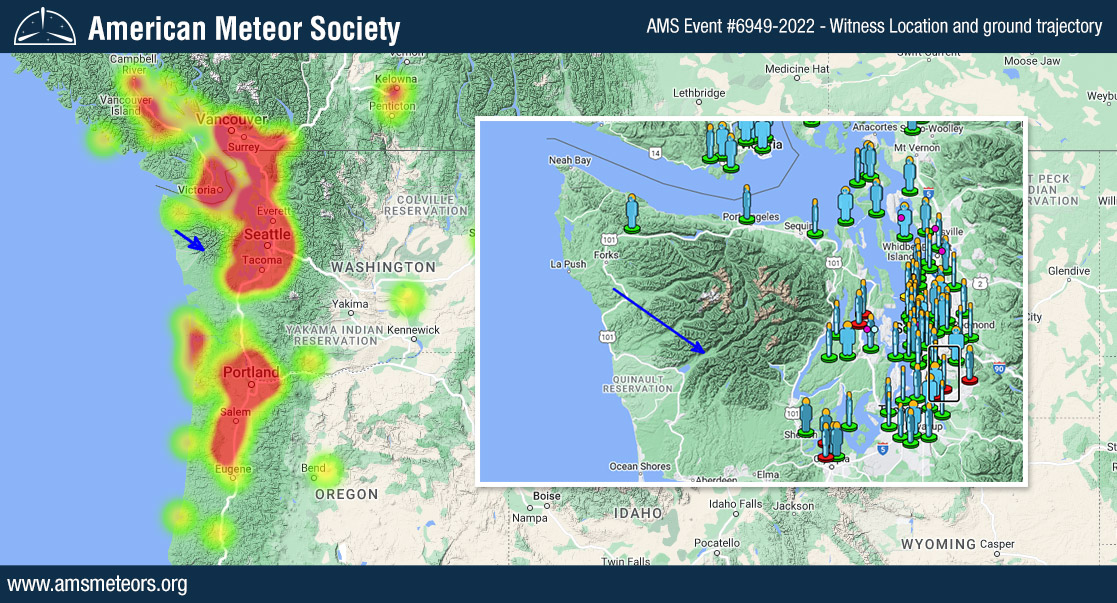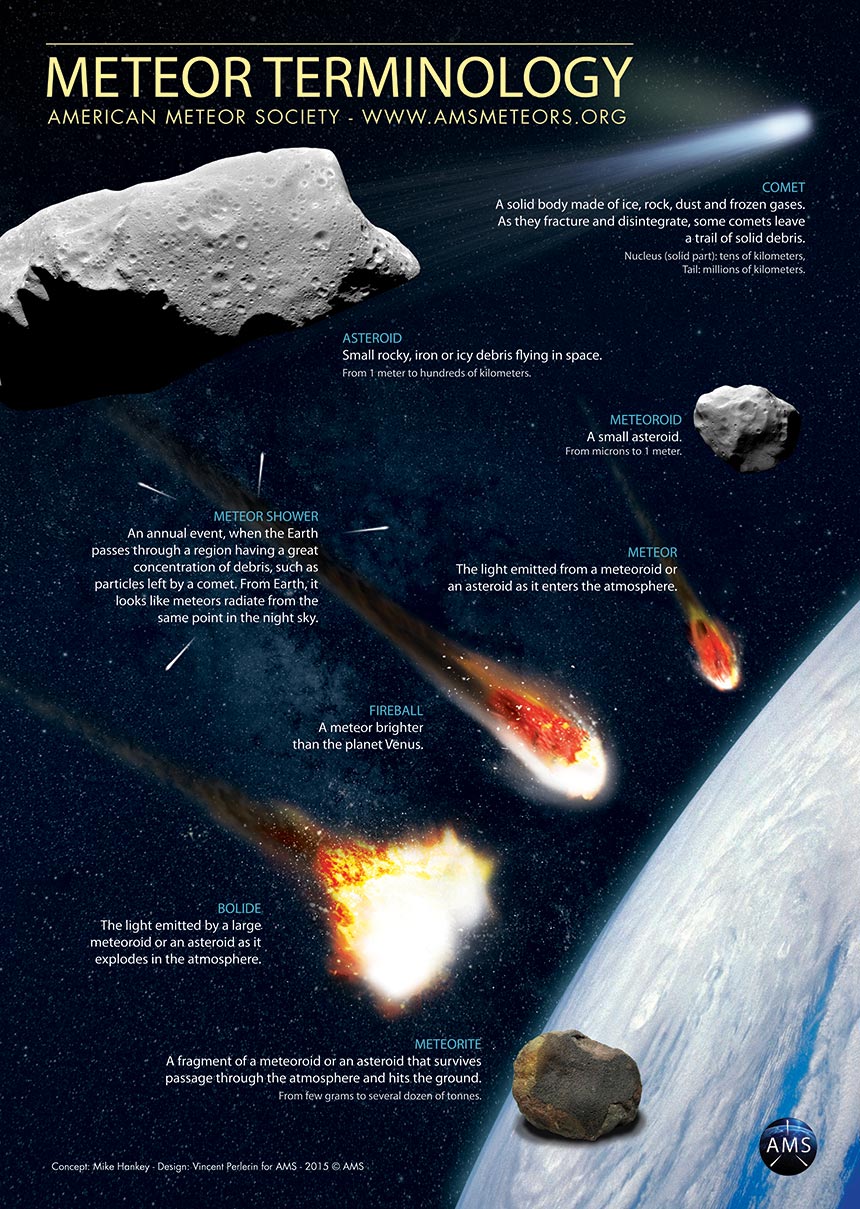Nearly 280 reports and 17 videos
The AMS received nearly 280 reports and many spectacular videos displaying a fireball event that occurred West of Seattle on Wednesday October 12, 2022, at 10:15 pm PDT (2022-10-13 05:15 UT). The initial computer generated trajectory of the AMS #2022-6949 event and the results of an analysis conducted by NASA show that the meteor was first sighted 58 miles (93km) above the Pacific Ocean due west of Oil City, moving to the southeast at 76,000 miles per hour (34,000 m/s). It traveled some 57 miles (92 km) through the atmosphere before disintegrating at an altitude of 41 miles (66km) above Lake Quinault, WA. This fireball, which is not a member of the currently active Taurid meteor shower, was moving too fast to produce meteorites.
A fireball is a meteor that is larger and brighter than normal. Most meteors are only the size of tiny pebbles. A meteor the size of a softball can produce light equivalent to the full moon for a short instant. The reason for this is the extreme velocity at which these objects strike the atmosphere. Even the slowest meteors are still traveling at 10 miles per SECOND, which is much faster than any round fired from a firearm. Fireballs occur every day over all parts of the Earth. We normally receive about 100 reports each day. It is rare though for an individual to see more than one or two per lifetime as these short-lived events also occur during the day, on a cloudy night, or over a remote area where no one sees it. Observing during one of the major annual meteor showers can increase your chance of seeing another one of these bright meteors even though, this event was’t from a known meteor shower. In this case, the meteor is called “sporadic”.
Submit an Official Fireball Report
If you want to learn more about Fireballs: read our Fireball FAQ.
The map below displays just how widely this object was visible from all over the East of Washington state. Visit the event page for this fireball to view the videos and read comments from the witnesses.

So far, we received 12 videos of this fireball – all accessible from the event page.
Fireball, Bolide?
Several thousand meteors of fireball magnitude occur in the Earth’s atmosphere each day. The vast majority of these, however, occur over the oceans and uninhabited regions, and a good many are masked by daylight. Those that occur at night also stand little chance of being detected due to the relatively low numbers of persons out to notice them.
Additionally, the brighter the fireball, the more rare is the event. As a general thumb rule, there are only about 1/3 as many fireballs present for each successively brighter magnitude class, following an exponential decrease. Experienced observers can expect to see only about one fireball of magnitude -6 (crescent moon) or better for every 200 hours of meteor observing, while a fireball of magnitude -4 (Venus) can be expected about once every 20 hours or so.

 American Meteor Society
American Meteor Society